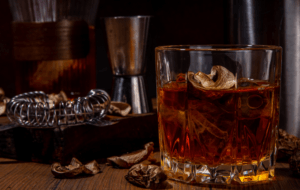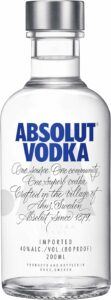Decoding Whiskey Labels Demystified: Exploring Classifications and Terminology
Introduction:
As you browse the whiskey aisle or peruse the menu at your favorite bar, you may encounter a myriad of terms and classifications that can seem daunting to decipher. Fear not, for we’re here to demystify the world of whiskey labels and terminology. Join us as we explore age statements, single malt vs. blended whiskey, cask strength, and more, unraveling the nuances that define each classification and helping you make informed decisions about your whiskey selections.
Age Statements:
One of the most common features found when decoding whiskey labels is the age statement, which indicates the length of time the whiskey has spent aging in barrels. Age statements typically range from a few years to several decades, with older whiskies often commanding higher prices due to their increased complexity and depth of flavor. While age can be a useful indicator of quality, it’s important to remember that it’s not the sole determinant – factors such as maturation conditions, barrel type, and distillation techniques also play a crucial role in shaping the final product.
Single Malt vs. Blended Whiskey:
Another distinction commonly found on whiskey labels is whether the spirit is a single malt or a blended whiskey. When decoding whiskey labels remember Single malt whiskey is made from 100% malted barley and produced at a single distillery, resulting in a spirit that is often characterized by its rich, complex flavors and aromas.
In contrast, blended whiskey is a combination of malt and grain whiskies sourced from multiple distilleries, offering a balanced and versatile drinking experience. While single malts are prized for their purity and individuality, blended whiskies can showcase the skill and artistry of the master blender in crafting a harmonious blend of flavors.
Cask Strength, Single Barrel, and Small Batch Whiskeys:
Beyond age statements and blend types, whiskey labels may also feature terms like cask strength, single barrel, and small batch.
Cask strength whiskies are bottled directly from the barrel without dilution, offering a full-bodied and intense drinking experience that showcases the whiskey in its purest form. Single barrel whiskies are drawn from a single barrel, resulting in variations in flavor from one bottle to the next and highlighting the unique characteristics of each barrel. Small batch whiskies are produced in limited quantities, often from a select number of barrels, allowing for greater consistency and attention to detail in the blending process.
Grain Whiskey, Pot Still Whiskey, and Malt Whiskey:
Finally, whiskey labels may specify the type of grain used in production, with common variations including grain whiskey, pot still whiskey, and malt whiskey. Grain whiskey is made from a mix of grains such as corn, wheat, and barley, resulting in a light and smooth spirit that is often used as a base for blended whiskies.
Pot still whiskey, also known as single pot still whiskey, is made from a mix of malted and unmalted barley and distilled in traditional copper pot stills, resulting in a robust and flavorful spirit with a distinctive character. Malt whiskey is made from 100% malted barley and distilled in pot stills, offering a rich and complex drinking experience that highlights the quality of the grain and the skill of the distiller.
Conclusion:
As we’ve explored the intricacies of whiskey labels and classifications, we’ve gained a deeper understanding of the factors that contribute to the diversity and complexity of this beloved spirit. Whether it’s deciphering age statements, distinguishing between single malt and blended whiskey, or appreciating the nuances of cask strength and small batch expressions, each classification offers a unique perspective on the art and craft of whiskey production. So the next time you find yourself faced with a whiskey label, take a moment to consider the terminology and classifications – you may just discover a new favorite to add to your collection.
Check out more:
-
-
- What is Whiskey?
- History and Origins of Whiskey
- Types of Whiskey: Scotch, Bourbon, Rye, Irish, and more
- The Whiskey Making Process
- Ingredients: Grains, Water, Yeast
- Mashing
- Fermentation
- Distillation
- Aging in Barrels
- Bottling and Packaging
- Exploring Whiskey Regions
- Scotch Whiskey Regions: Highland, Lowland, Speyside, Islay, Campbeltown
- Bourbon Whiskey Regions: Kentucky and Beyond
- Irish Whiskey Regions
- Other Whiskey Producing Regions
- Understanding Whiskey Labels and Classifications
- Age Statements
- Single Malt vs. Blended Whiskey
- Cask Strength, Single Barrel, and Small Batch Whiskeys
- Grain Whiskey, Pot Still Whiskey, and Malt Whiskey
- Tasting and Evaluating Whiskey
- Whiskey Glassware
- Proper Whiskey Tasting Techniques
- Flavor Profiles: Sweet, Spicy, Smoky, Fruity, Nutty, and more
- Identifying Characteristics: Nose, Palate, Finish
- Pairing Whiskey with Food
- Complementary Flavors and Textures
- Whiskey and Cheese Pairings
- Whiskey and Chocolate Pairings
- Whiskey Cocktails and Food Pairings
- Collecting and Investing in Whiskey
- Rare and Collectible Whiskeys
- Whiskey Investment Strategies
- Proper Storage and Care of Whiskey
- Whiskey Culture and Traditions
- Whiskey Drinking Etiquette
- Famous Whiskey Drinkers and Stories
- Whiskey Festivals and Events
- Whiskey Cocktails and Recipes
-
Disclaimer: This post contains affiliate links. If you purchase through these links, I may earn a small commission at no additional cost to you.

